This post contains affiliate links.
Nine common questions regarding the migration of Nebraska hummingbirds are discussed in this article.
When Do Nebraska Hummingbirds Arrive?
The earliest arrivals of Nebraska hummingbirds are seen in May and new arrivals continue through June.
Nebraska hummingbirds begin their spring migration north from as far away as Panama, or as close as Mexico. Nebraska hummingbirds arrive in Nebraska as early as May while some late migrators may arrive as late as June but by the end of June, all hummingbirds that are migrating further than Nebraska are gone from Nebraska.
The first migrating hummingbirds will be males followed by the females about a week later. The males arrive first to stake out the territory that they will defend as they try to attract a female.
Ruby-throated hummingbirds are by far the most commonly seen Nebraska hummingbirds, and will probably be the first migrating hummingbirds to be seen in Nebraska.
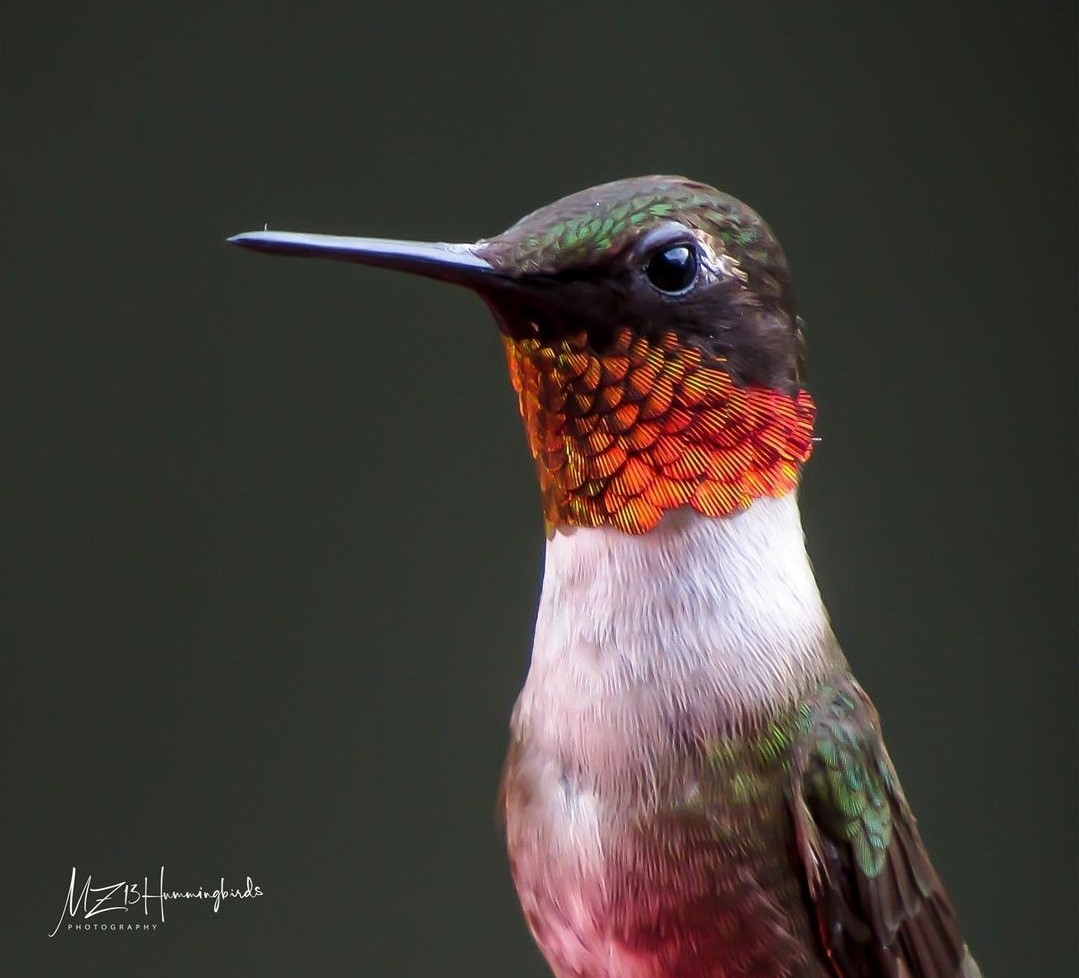
Photo by: mz13hummingbirds
Watch for the male’s vividly colored gorget; a week or so later, the females will begin to appear at your feeders.
See my article: How to Identify a Hummingbird’s Gender in 4 Easy Steps
According to the Missouri Department Of Conservation, if Nebraska hummingbird enthusiasts start feeding them when they arrive, there is less chance they will move on and will decide to spend the summer in Nebraska.
Nebraska hummingbirds starting their spring migration north from Panama City, Panama need to fly about 3,959 miles over land or 2,439 miles if flying across the Gulf of Mexico to reach Omaha, Nebraska.
Nebraska hummingbirds starting their journey north from the southernmost border at Brownsville Texas, need to fly 1,062 miles to reach Omaha.
Are There Nebraska Hummingbirds That Live in the State Year-round?
There are no hummingbird species that live in Nebraska year-round, however, the Anna’s and Rufous hummingbirds are seen and documented in the middle of winter.
Nebraska Hummingbirds That Are Seen During Winter Months Shown In Order Of Abundance Seen In Winter
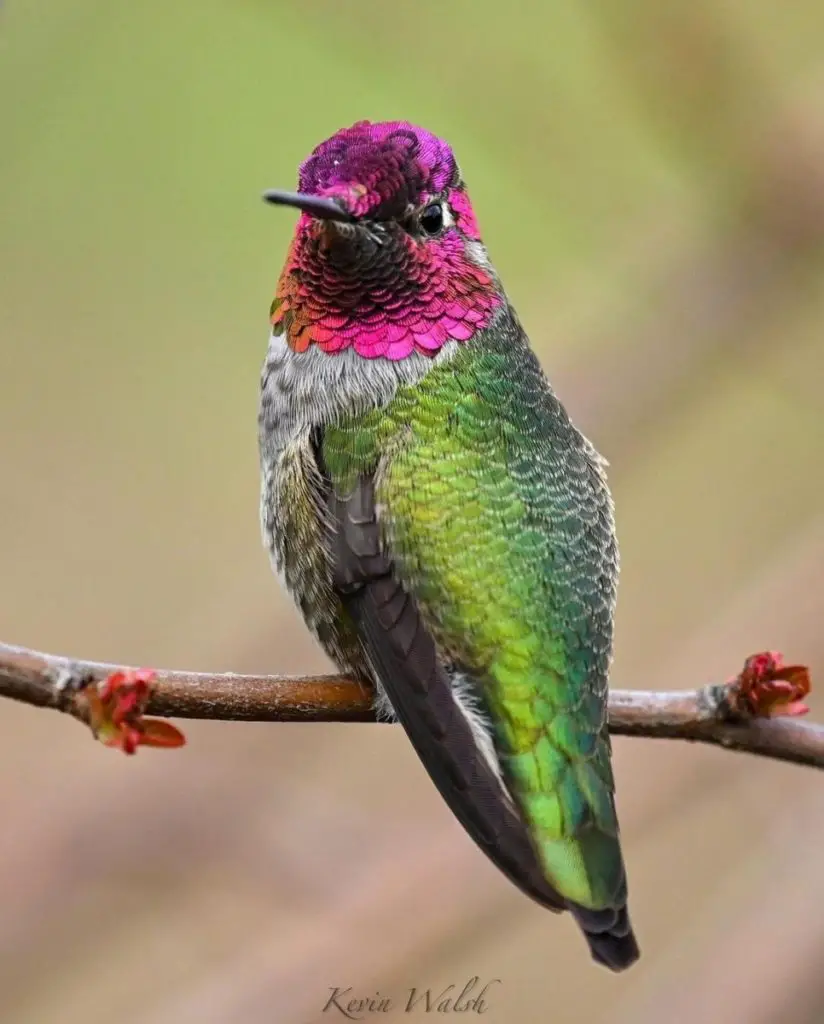
Photo by: Kevin Walsh
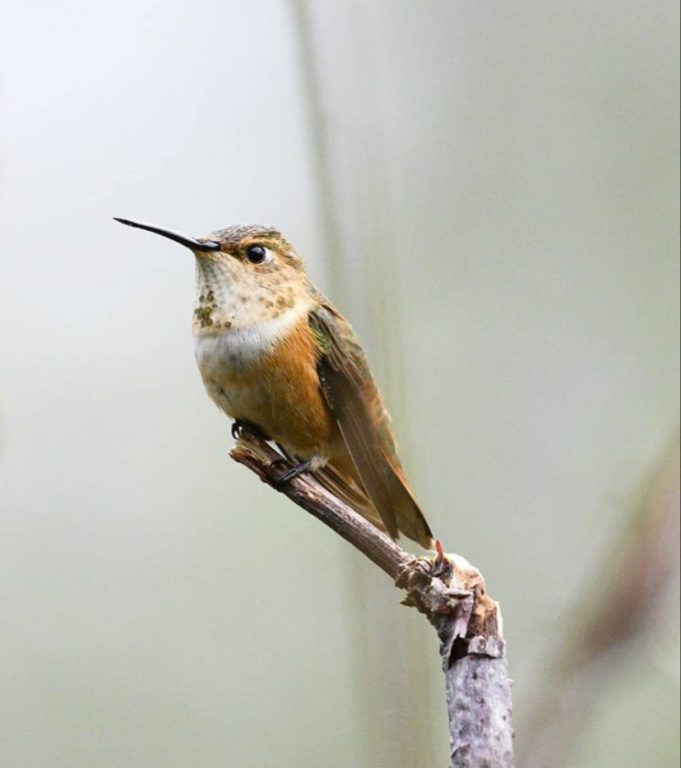
Photo by: Jace_the_bird_nerd
The general public is unaware of how cold-tolerant hummingbirds actually are.
Some banded hummingbirds have been observed at temperatures as low as -9 degrees Fahrenheit with a wind chill of -36 degrees Fahrenheit, according to eBird.org.
Which Nebraska Hummingbirds Breed and Nest in the State?
The Broad-tailed and Ruby-throated hummingbirds are the only hummingbirds that breed and nest in Nebraska.
Broad-tailed – The Broad-tailed hummingbird breeds primarily in the western United States and the center of Mexico. They are noticeably absent in the coastal states of Washington, Oregon and California with the exception of a small along the California/Nevada state line.
Broad-tailed hummingbird breeding states include Montana, Idaho, Wyoming, Nevada, Utah, Colorado, Arizona, New Mexico, western Texas, and a small area in South Dakota at the state border with Wyoming.
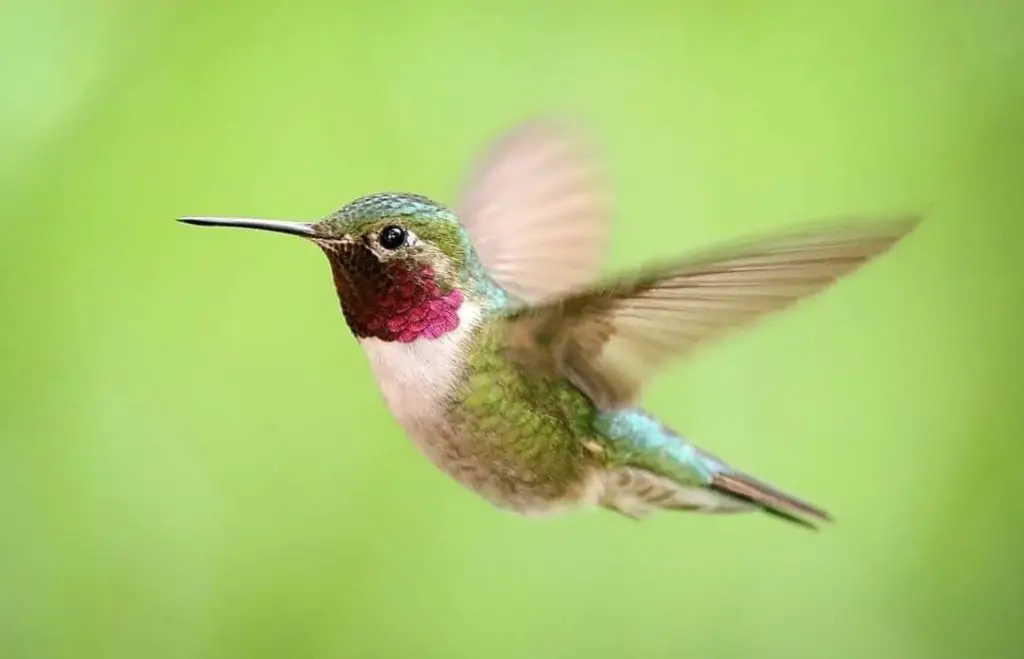
Photo by: bird.whisperer
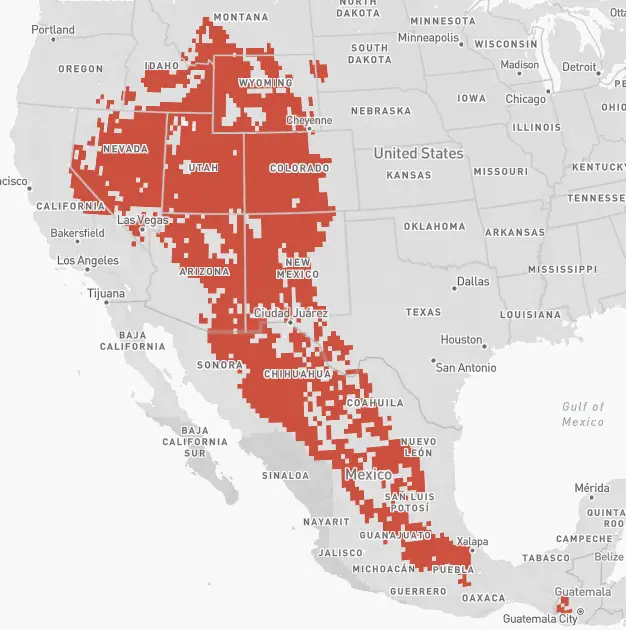
Ruby-throated – The Ruby-throated hummingbird has an extensive breeding area that covers the entire eastern half of the United States, and extends into Canada as far west as Alberta.
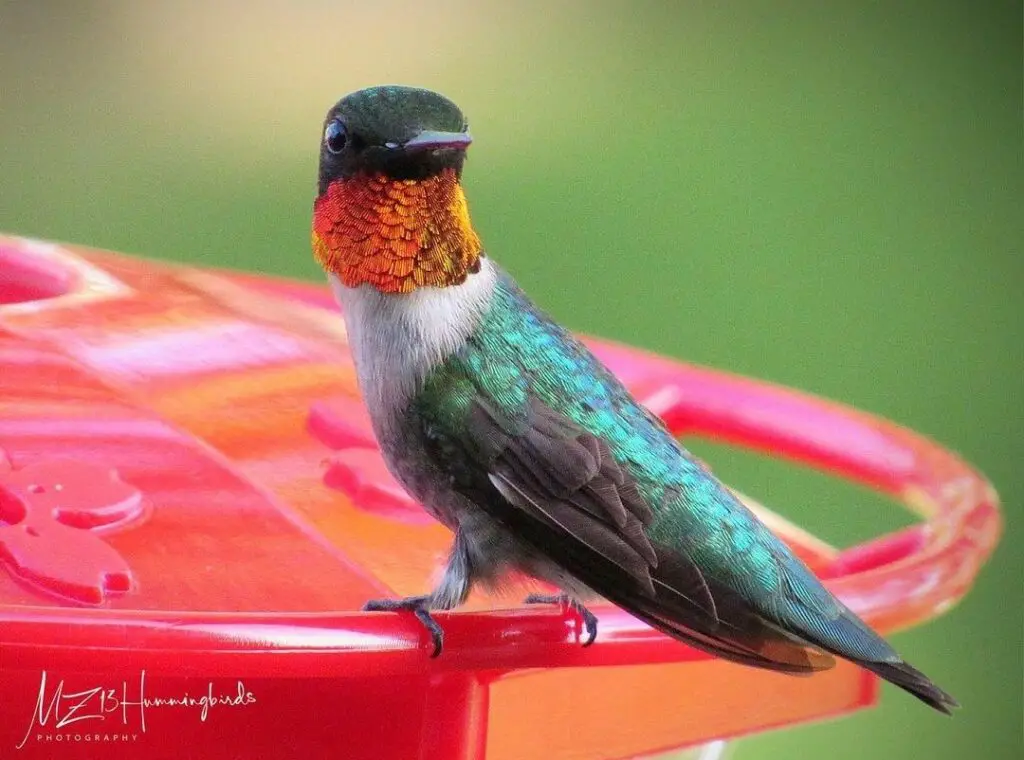
Photo by: mz13hummingbirds

The entire reason for northern migration, much like salmon swimming upstream to their place of birth to lay eggs, is for female hummingbirds to return to the area where they were born to build a nest, mate, and raise a family.
When a female hummingbird arrives at the breeding grounds, her attention shifts to building a nest and then looking for a mate.
Hummingbird females prefer to build their nests in deciduous trees, 10 to 20 feet above the ground.
It will take her between 5 and 7 days to construct the nest of materials such as plant down, moss, and fine plant fibers, decorated with lichens and held together by spider webs.
See my article: Hummingbird Parents: (Mating to Nesting)
See my article: Baby Hummingbirds: (Egg to Fledgling)

Photo by: Aaron Gomperts
Each species of male hummingbird has its own unique mating dance ritual of courtship to attract a female. They do perfectly choreographed dives and dance maneuvers to attract a flirty female.
See my article: Hummingbird Dance: 5 Interpretive Explanations
During the mating ritual, there is no penetration since male hummingbirds lack external sexual organs.
The “Cloacal Kiss” occurs when the cloacae, (pronounced “kloh-ay-see”), of both hummingbirds are brought together during the brief mating procedure, which lasts only three to five seconds.
After the Cloacal kiss, the female must begin building the nest immediately.
Each brood of hummingbirds typically produces two eggs, laid on consecutive days.
The majority of hummingbirds have two broods annually, although some may have more depending on the timing of their migration and the duration of the days they spend in their breeding areas.
Nebraska nesting hummingbirds usually have 2 broods per year but some may have time to work in a third brood.
When Should I Put Up My Feeders For Nebraska Hummingbirds?
Nebraska hummingbird enthusiasts should put out hummingbird feeders in early May to attract the very earliest arriving migrating hummingbirds.
The majority of Nebraska migrating hummingbirds will arrive in June.
If migrating hummingbirds are fed when they start to arrive there is less chance of them moving on.
Hummingbird aficionados can reduce the likelihood that hummingbirds will leave the state and elect to spend the summer there by providing food for them as soon as they arrive, according to the Missouri Department of Conservation.
Approximately one week after the arrival of the male hummingbirds, the females will follow.
Other Nebraska hummingbirds will continue to arrive until about mid-June.
Hummingbirds seen in Nebraska after mid-June will be hummingbirds that will spend their entire summer in Nebraska.
Make sure to use high-quality nectar solutions in your hummingbird feeders; homemade nectar works best.
See my article: Forget Commercial Hummingbird Food, Try Making Homemade Nectar
See my article: The One Thing You Need to Eliminate From a Hummingbird’s Diet
How Long Do Nebraska Hummingbirds Stay in the State?
Nebraska hummingbirds stay in the state for at least six months.
They will start arriving as early as early May and most will be gone in October.
Some Anna’s and Rufous, are seen in Nebraska during winter, but most migrate south for the winter.
No hummingbird species live in Nebraska year-round.
The general public is unaware of how tolerant hummingbirds actually are.
Some banded hummingbirds have been observed at temperatures as low as -9 degrees Fahrenheit with a wind chill of -36 degrees Fahrenheit, according to eBird.org.
Some migrating seasonal hummingbirds choose to over-winter in Nebraska and those too old or injured to migrate will be the only likely hummingbirds Nebraska hummingbird enthusiasts will see during the winter.
The extremely cold-tolerant Anna’s and Rufous hummingbirds are the most probable migratory hummingbirds to decide to spend the winter in Nebraska.
In Pennsylvania, a state known for its cold harsh winters, the Valley Forge Audubon Society reports winter sightings of the Allen’s, Calliope, Rufous, and Black-chinned hummingbirds.
Because hummingbirds have such long memories, they will revisit the flowers and feeders they frequented during their spring migration and will remember them when they migrate back to the south in the fall.
See my article: Hummingbird Adaptation and Remarkable Ability to Locate Food
The most common Nebraska hummingbird seen during the hot summer months will be the Ruby-throated hummingbird with Rufous hummingbirds being a far distant second.
Finding strategies to provide your hummingbirds with cool nectar might be crucial when the summer heat becomes unpleasant and tough to handle.
See my article: How to Help Hummingbirds in Hot Weather
When Do Nebraska Hummingbirds Leave the State?
Nebraska hummingbirds begin leaving the state as early as August and by late October they have migrated to their over-wintering areas in Mexico and Central America.
No hummingbirds live in Nebraska year-round.
Most of Nebraska migrating hummingbirds are gone by the end of October but a few stragglers might stay until the end of the year.
A few older hummingbirds will be the first to start the fall migration as early as August, depending on their strength and energy, with the youngest hummingbirds finishing the fall migration by late October.
An article from the University of Southern Mississippi states that the hummingbirds that are the oldest will begin their migration earlier than the others.
This elongated migration time frame ensures late straggling migrants have enough food available to fuel their bodies before making the long taxing migration south for the winter.
Some migrating hummingbirds Nebraska will possibly see during the winter are migrating hummingbirds that are too old or injured to migrate.
The circannual (annual internal clock) and circadian (day internal clock) rhythms cause hummingbird migration.
The inclination of a single hummingbird to migrate is triggered by a variety of circumstances, including variations in temperature, time of year, and weather; other causes include a loss in food supplies and a reduction in sunshine due to shortened days.
Similar to the spring migration, male hummingbirds start the fall migration to the south first. As soon as the female hummingbirds have finished rearing their young to the point that they can travel independently, they will set out on their southern fall migration.
When Should I Take Down My Feeders For Nebraska Hummingbirds?
Mid-to-late October, or after a few weeks without any hummingbird sightings, is the ideal time to remove Nebraska hummingbird feeders for the winter.
Feeders are left up all winter by some Nebraska to feed the uncommon winter hummingbirds and those that are too old or injured to migrate.
The dilemma hummingbird enthusiasts struggle with every year is whether to leave the hummingbird feeders up all year or take them down during the winter.

Photo by: Andrea Varju
The challenge then becomes preventing the nectar from hummingbirds from freezing.
See my article: 11 DIY Ways To Keep Hummingbird Nectar From Freezing
Investing in a hummingbird feeder warmer, like the Hummer Health feeder heater, is one approach to prevent hummingbird nectar from freezing.
Unfortunately, it is only compatible with a select few types of hummingbird feeders, like the Aspect’s HummZinger feeder.
The Anna’s and Rufous hummingbirds, who are Nebraska most likely uncommon winter visitors, depend on the nectar that some hummingbird fans leave out all winter long.
Most Allen’s, Black-chinned, Broad-billed, Broad-tailed, Calliope, Costa’s, and Ruby-throated hummingbirds will not spend the winter in Nebraska and will decide to migrate south to Mexico for the winter.
Keeping hummingbird feeders up during the winter is a noble gesture that helps other migrating species that are injured or too old to migrate by providing them with nectar.
See my article: 11 DIY Ways to Keep Hummingbird Nectar From Freezing
See my article: Should I Keep My Hummingbird Feeder Out During the Winter?
Hummingbird enthusiasts who leave hummingbird feeders up all winter provide much-welcome nutrition for late migrators and hummingbirds too old or injured to migrate.
The general public is unaware of how tolerant hummingbirds actually are.
Some banded hummingbirds have been observed at temperatures as low as -9 degrees Fahrenheit with a wind chill of -36 degrees Fahrenheit, according to eBird.org.
See my article: 3 Reasons Why Hummingbirds Are Banded
Hummingbirds that depend on these wintertime feeders may die if hummingbird feeders are taken down in the middle of winter during periods of below-freezing temperatures.
See my article: 11 DIY Ways to Keep Hummingbird Nectar From Freezing
How Long Does It Take a Nebraska Hummingbird to Migrate?
A Nebraska hummingbird requires 35 hours flying at its average flight speed of 30mph to fly from Omaha to the most distant Mexican border at Brownsville, Texas, 1,062 miles away.
Hummingbirds migrating to Panama, 2,439 miles across the Gulf of Mexico or 3,959 over land, need to fly 81 or 131 hours respectively.
Some fly at a relaxed distance as slow as 1 hour per day, others fly up to 500 miles non-stop in about 20 hours as some do while migrating across the Gulf of Mexico.
Unlike other migrating birds, hummingbirds do not travel in flocks.
Individual hummingbirds travel according to their own internal clock.
This staggered migration pattern ensures resources are not consumed and depleted all at once.
Hummingbirds regularly acquire between 25% and 50% of their body weight as migration draws near by eating more nectar from feeders and blooming plants and by collecting more insects in midair for protein.
This rise in body fat provides the hummingbird with energy for its protracted migration flight.
Expect to see an increased volume of southern migrating hummingbird visitors to your feeders in Nebraska during this fall migration from August through October.
Hummingbirds that stopped by your feeders in the spring will remember exactly where it is, and they will probably stop by again en route to their overwintering grounds in Mexico and Central America.
See my article: Hummingbird Adaptation and Remarkable Ability to Locate Food
Where Do Nebraska Hummingbirds Go in the Winter?
Nebraska Ruby-throated, Rufous, Broad-tailed, Calliope, Black-chinned, Costa’s, and Broad-billed
hummingbirds travel south to over-winter in Mexico, Guatemala, Belize, Honduras, El Salvador, Nicaragua, Costa Rica, and Panama.
Allen’s overwinters in Southern California.
Anna’s overwinters in Southern California and upper parts of Baja and Mexico.
Ruby-throated – The Ruby-throated hummingbird overwinters primarily in Mexico, Guatemala, Honduras, El Salvador, Nicaragua, Costa Rica, and Panama. Ruby-throated hummingbirds are seen in some years, during the winter months, in scattered areas throughout the USA including New Mexico, Texas, Florida, Georgia, South Carolina, and North Carolina.
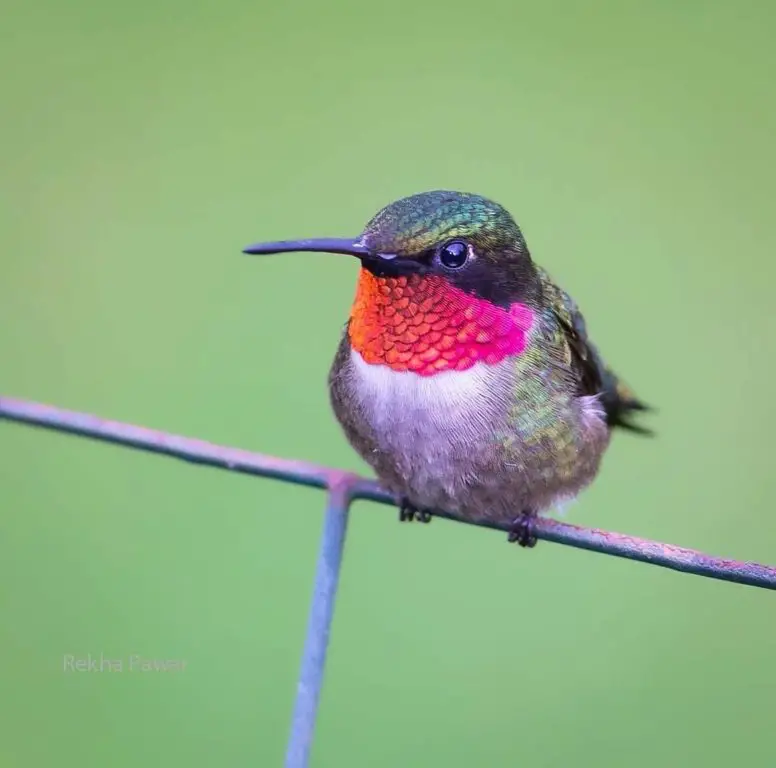
Photo by: Rekha Pawar
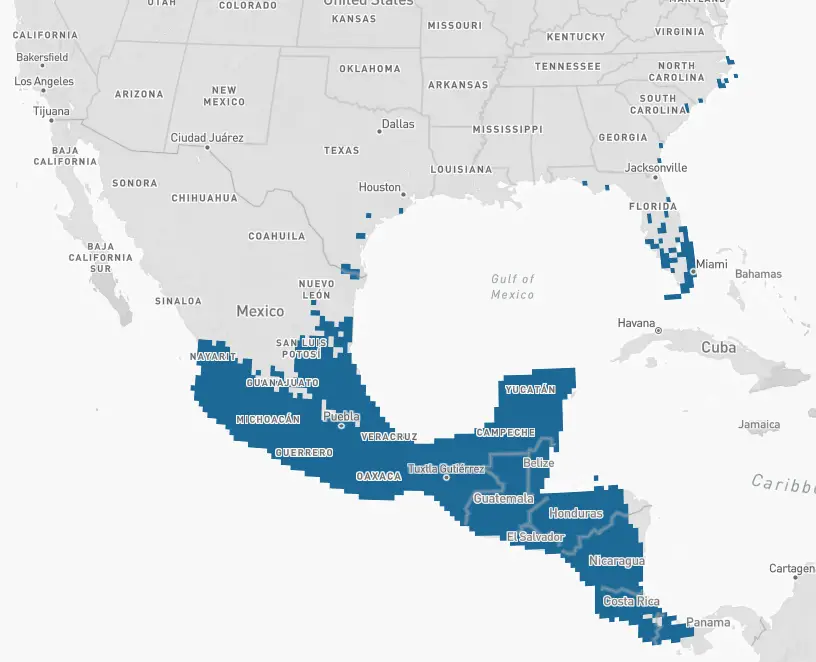
Rufous – The Rufous hummingbird overwinters primarily in Mexico. Rufous hummingbirds are seen in some years, during the winter months, in scattered areas throughout the USA including New Mexico, Texas, Louisiana, Mississippi, Georgia, Florida, Tennessee, North and South Carolina, Virginia, Kentucky, Missouri, Illinois, Ohio, Pennsylvania, New York, Vermont, Michigan, Wisconsin, and Minnesota.
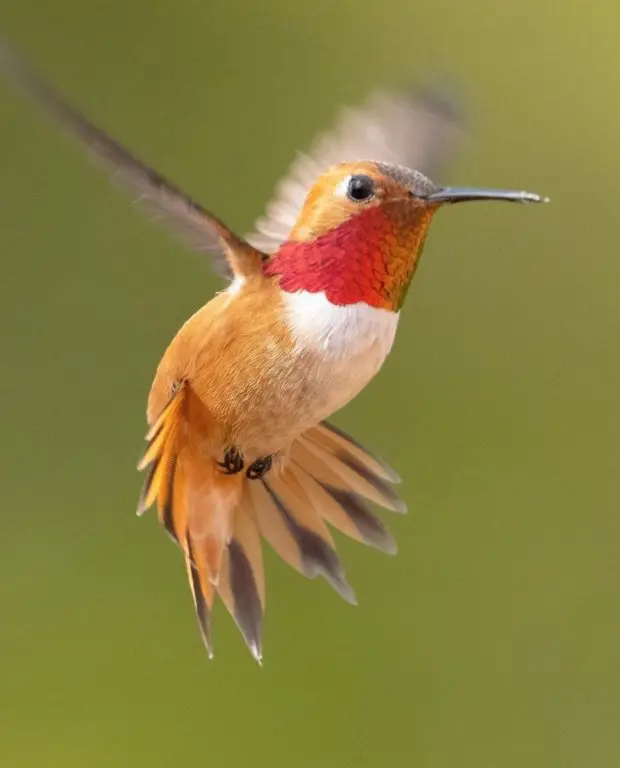
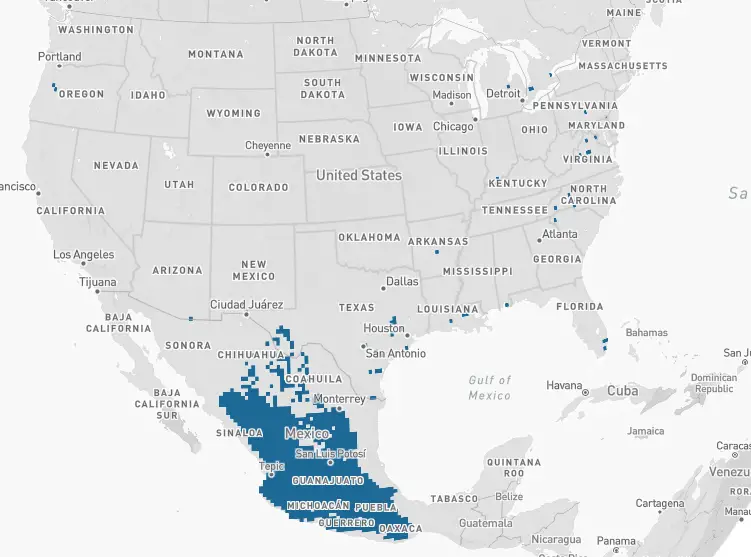
Broad-tailed – The Broad-tailed hummingbird overwinters primarily in Mexico and Guatemala. Broad-tailed hummingbirds are seen in some years, during winter months, in scattered areas in Western Texas.

Photo by: bird.whisperer
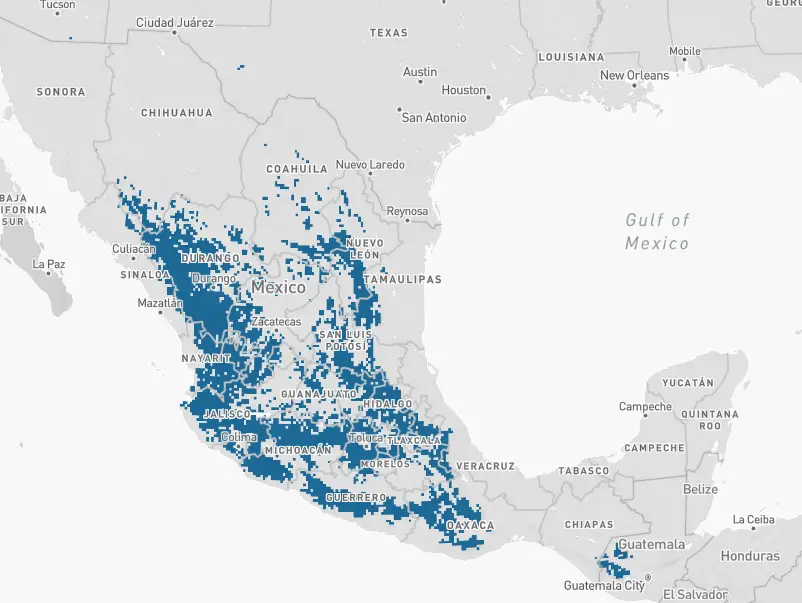
Calliope – The Calliope hummingbird overwinters primarily on the west coast of Mexico. Calliope hummingbirds are seen in some years, during winter months, in Ohio, Pennsylvania, and New York.

Photo by: sony_alpha_male

Photo by: Bob Free
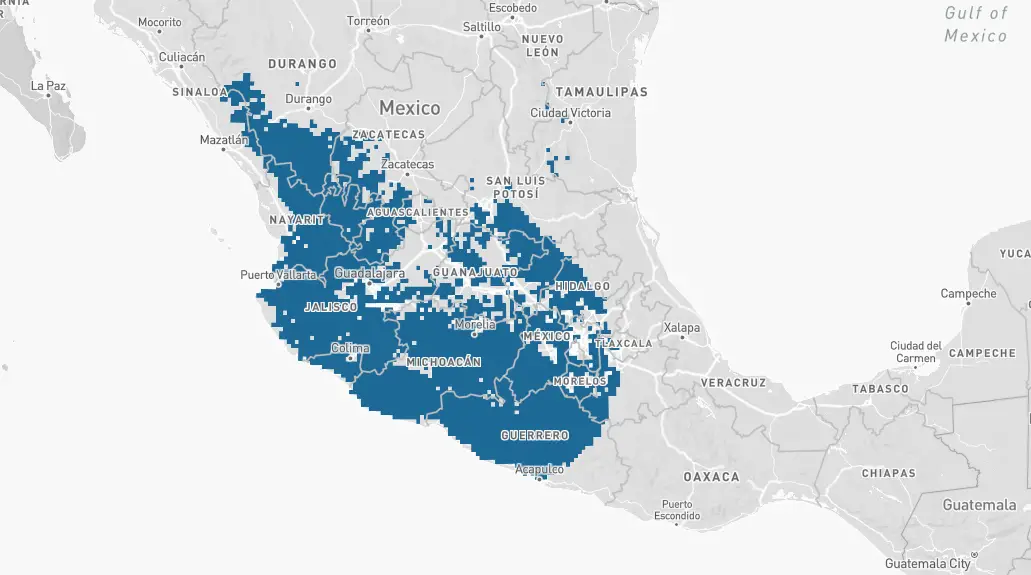
Black-chinned – The Black-chinned hummingbird overwinters primarily in Mexico. Black-chinned hummingbirds are seen in some years, during winter months, in scattered areas throughout the USA including Texas, Louisiana, Mississippi, Florida, Georgia, Arkansas, North Carolina, and as far north as Maryland and Pennsylvania.
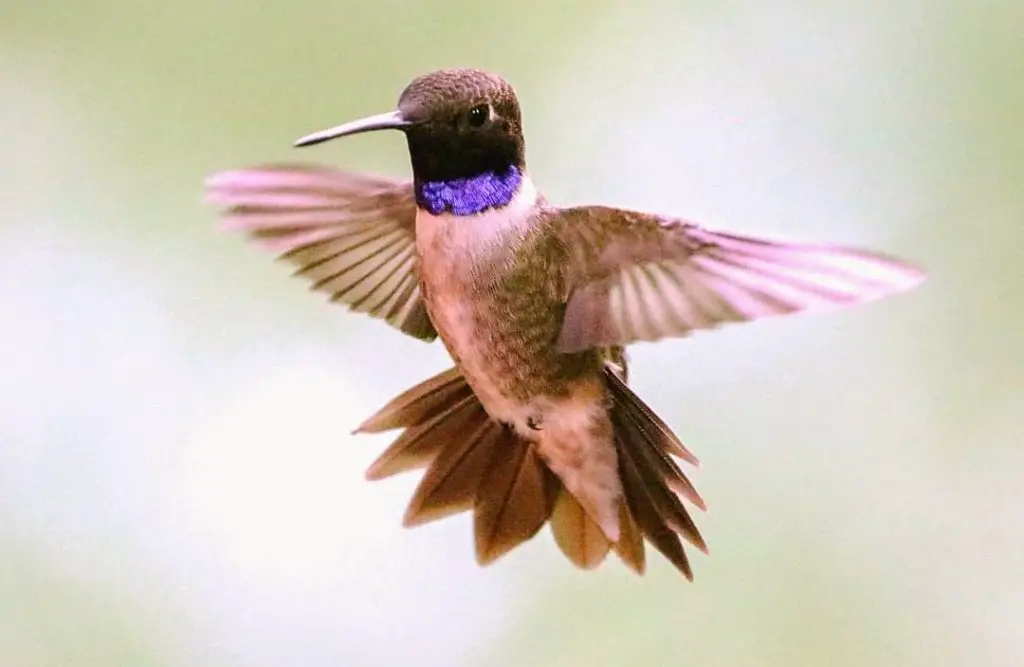
Photo by: bird.whisperer

Costa’s – The Costa’s hummingbird overwinters primarily in Southern California, Southern Arizona, Baja California, and the Western Coast of Mexico. The Costa’s hummingbirds are seen in some years, during the winter months, in Nevada and Utah.
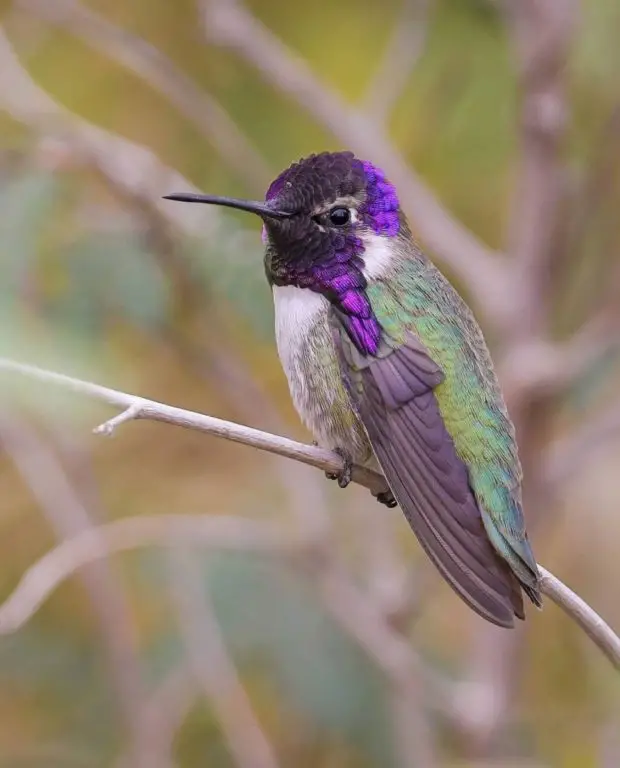
Photo by: bird.whisperer
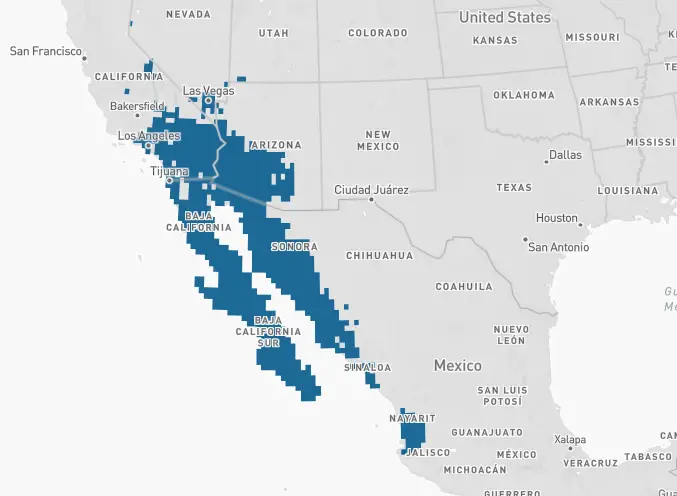
Broad-billed – The Broad-billed hummingbird overwinters primarily in Mexico. Broad-billed hummingbirds are seen in some years, during winter months, in scattered areas throughout the USA including Texas, Arizona, Louisiana, Florida, and Utah.
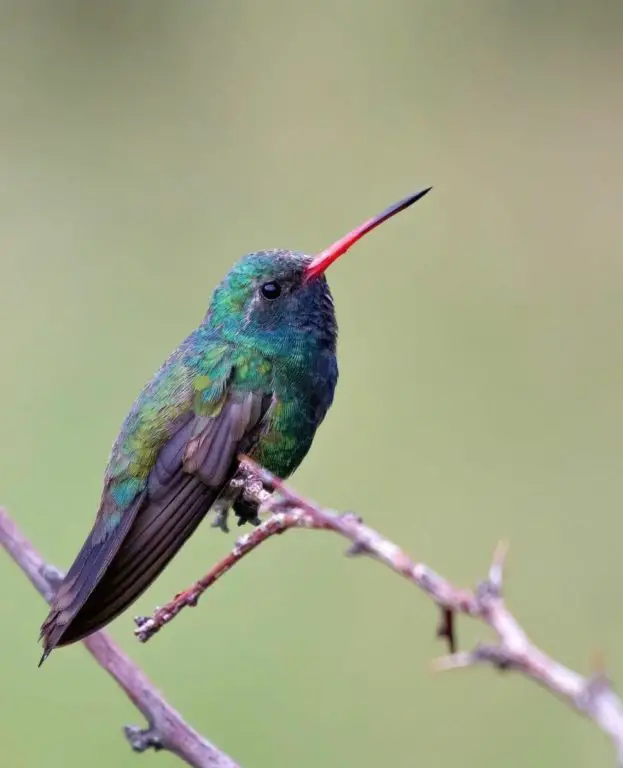
Photo by: Aaron Gomperts

Allen’s – The Allen’s hummingbird overwinters primarily in Southern California. The Allen’s hummingbirds are seen in some years, during winter months, in scattered areas throughout the USA including Texas, Tennessee, and as far north as Maryland, New York, and Wisconsin.
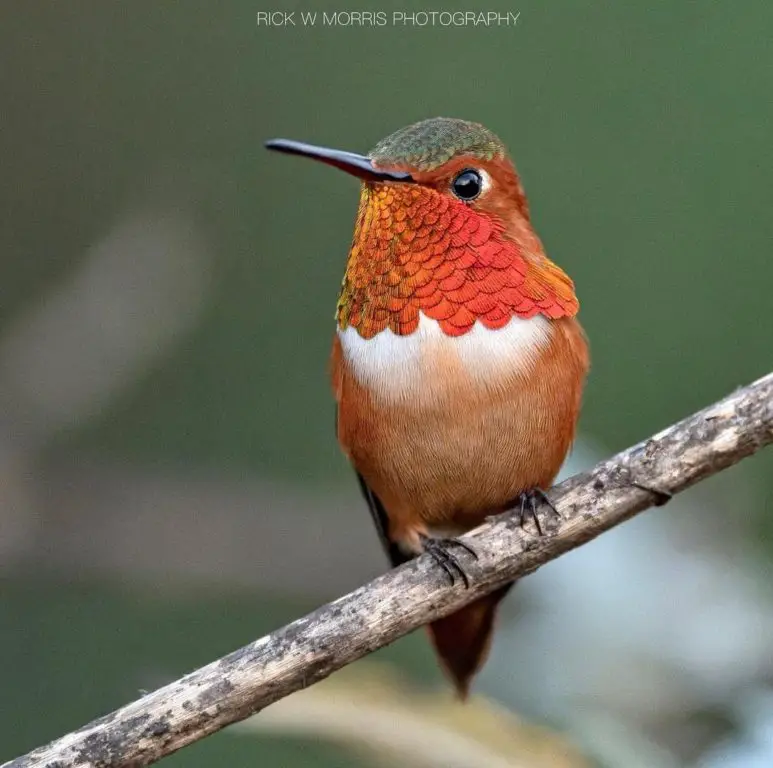
Photo by: IntheWildwithRick
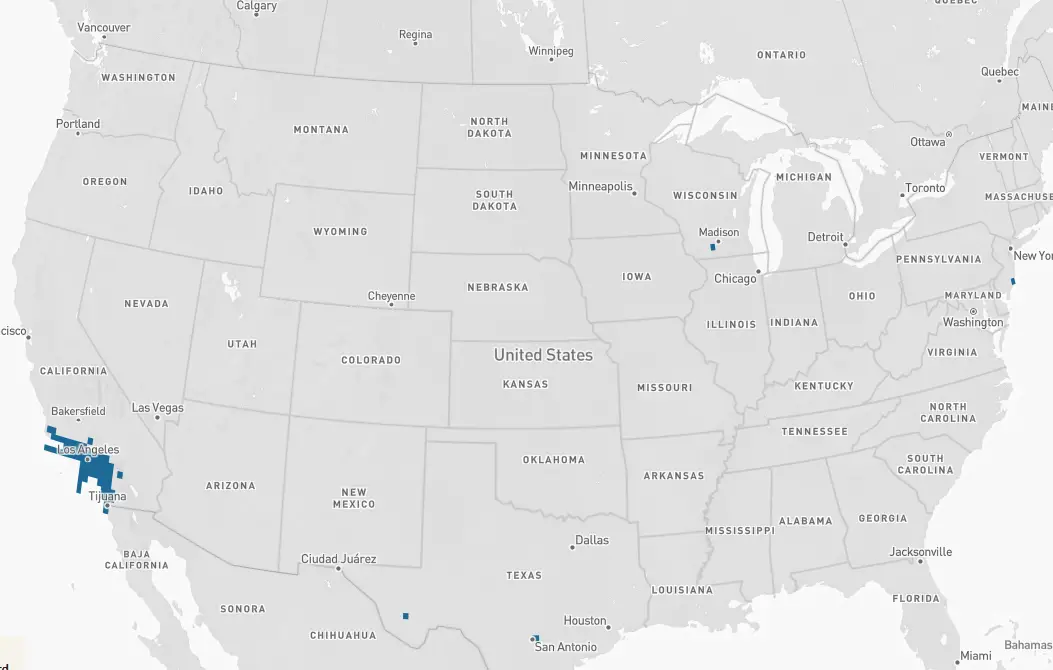
Anna’s – The Anna’s hummingbird overwinters primarily in Southern California and the upper parts of Baja and Mexico. Anna’s hummingbirds are seen in some years, during winter months, in scattered areas throughout the USA including Texas, Missouri, Illinois (Chicago area), Maryland, Utah, and Idaho.

Photo by: Kevin Walsh
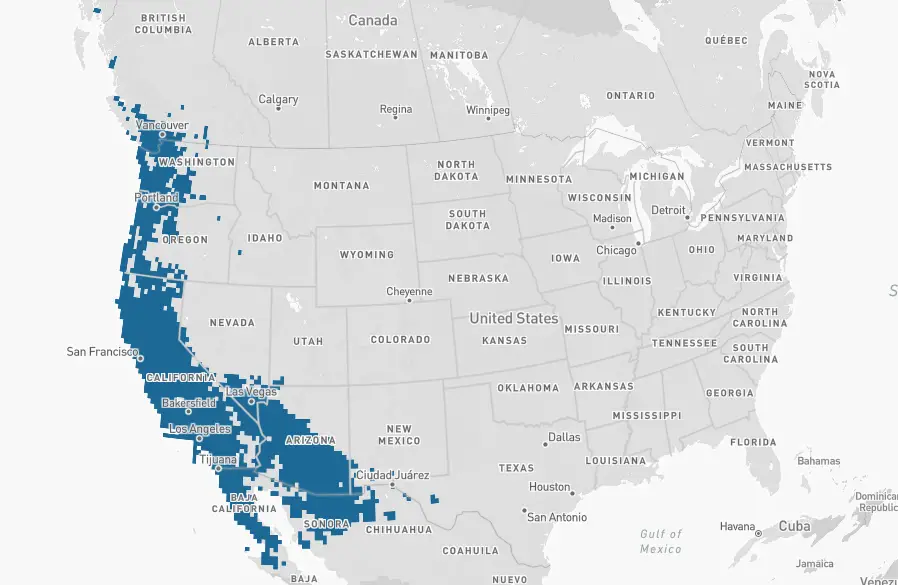
Every hummingbird has an exceptional memory. Throughout their spring migration, they can recall every flower or feeder they visited, and they will revisit those spots every year.
Hummingbirds have been seen to return to a feeder even after it has been removed for a few years.
See my article: Hummingbird Adaptation and Remarkable Ability to Locate Food
Check out my other posts on Hummingbird Questions
Happy Hummingbird Watching!
Backyard Visitors participates in affiliate programs which compensate us for referring traffic.

